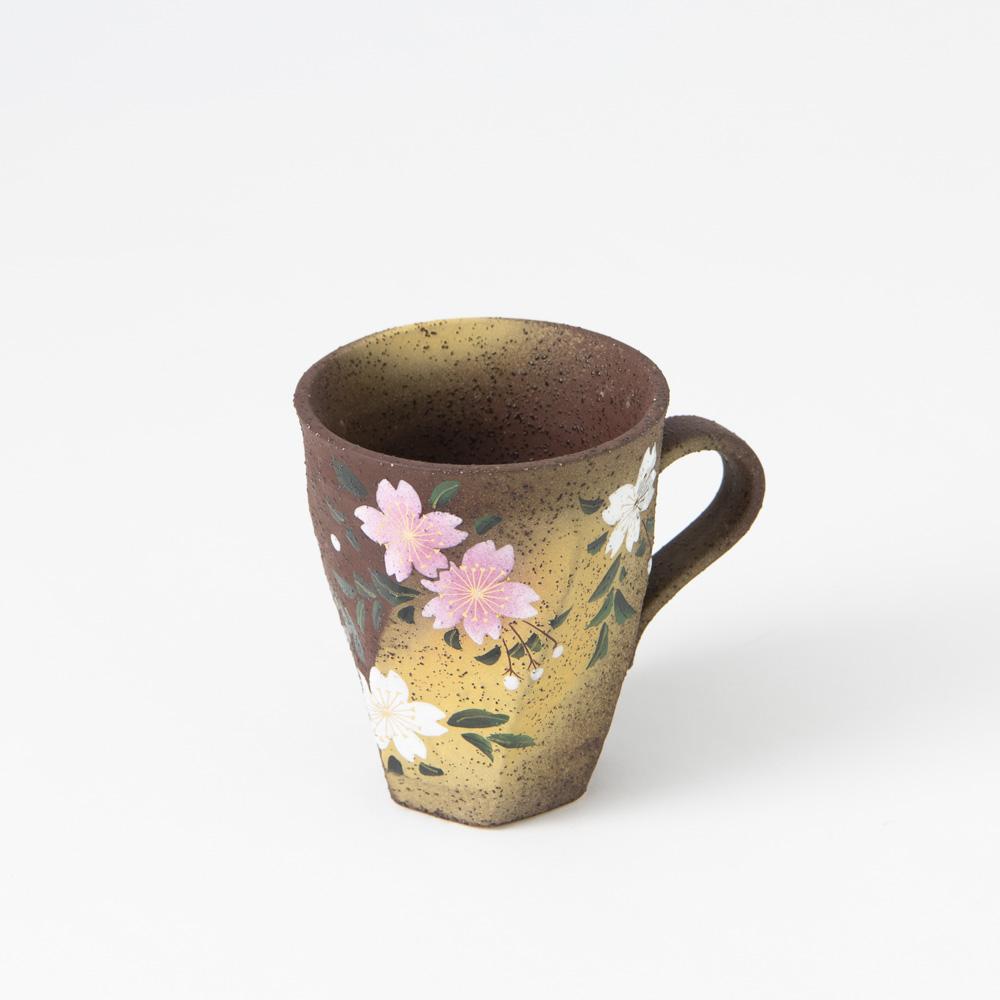
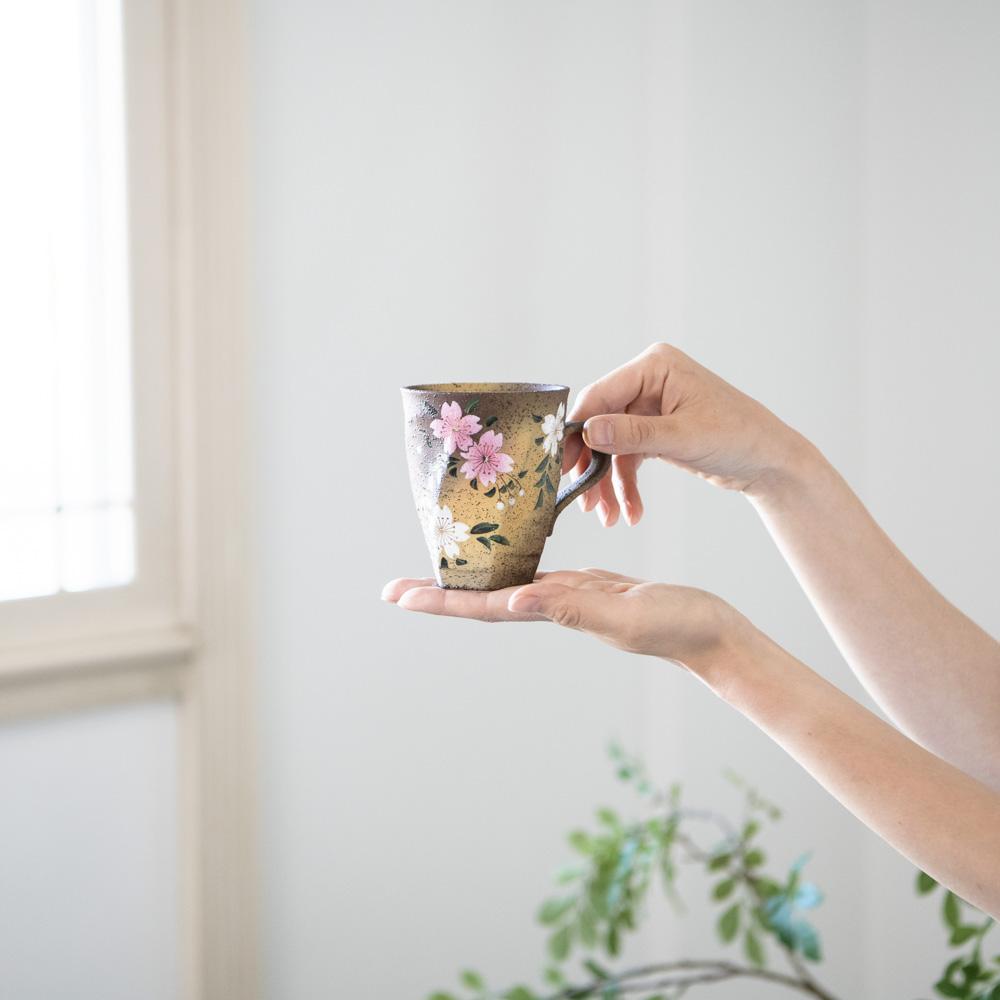
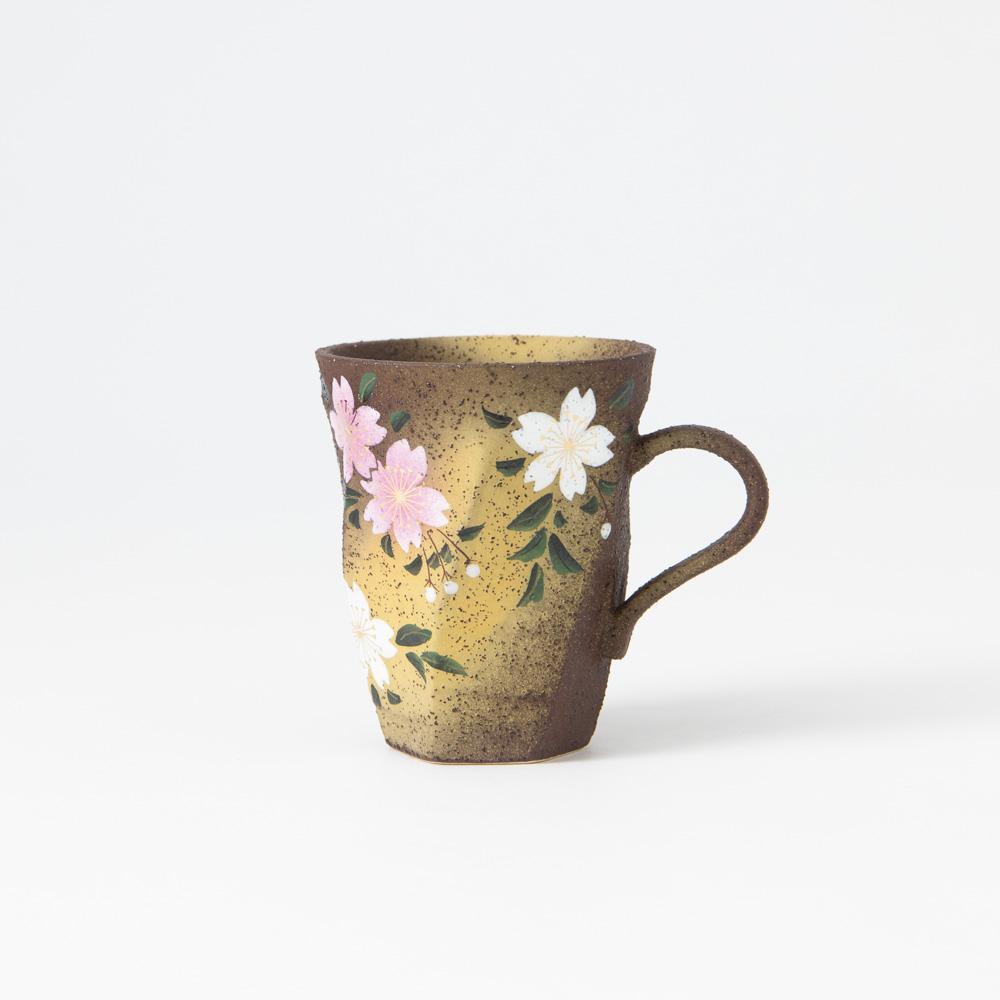
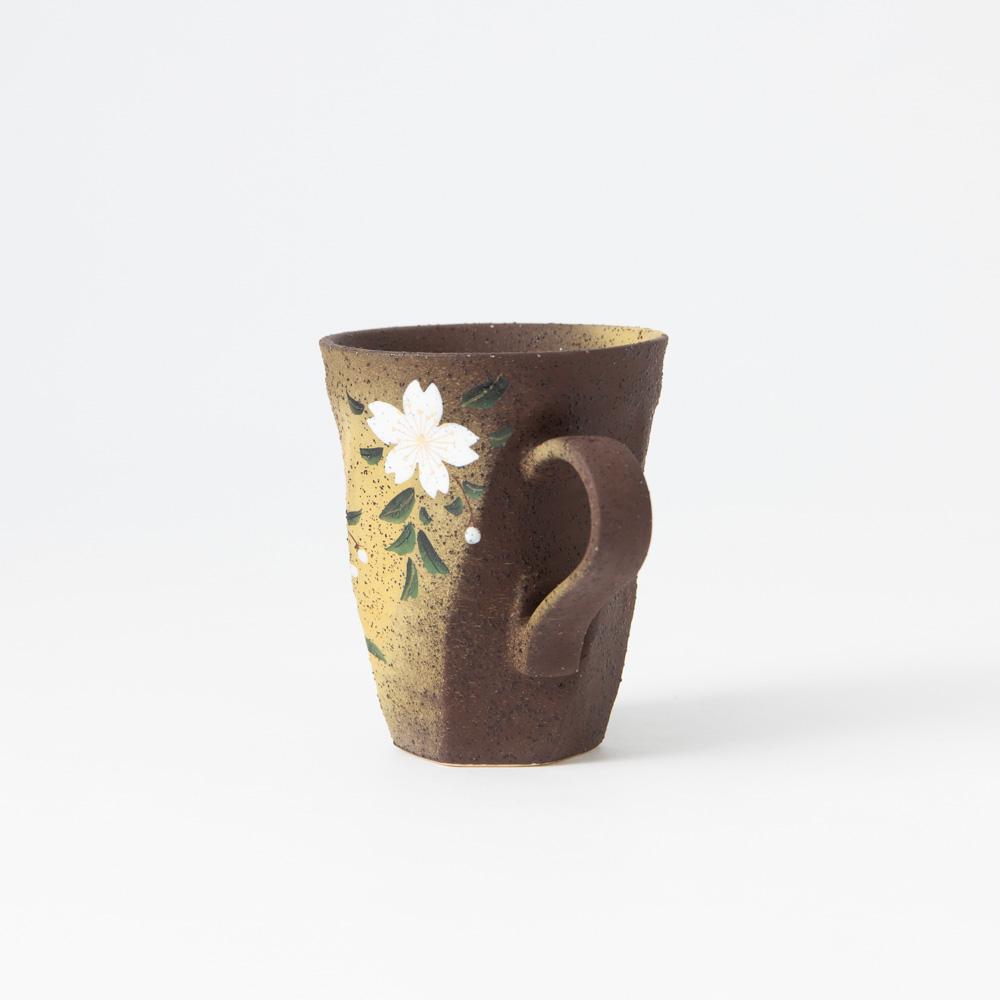
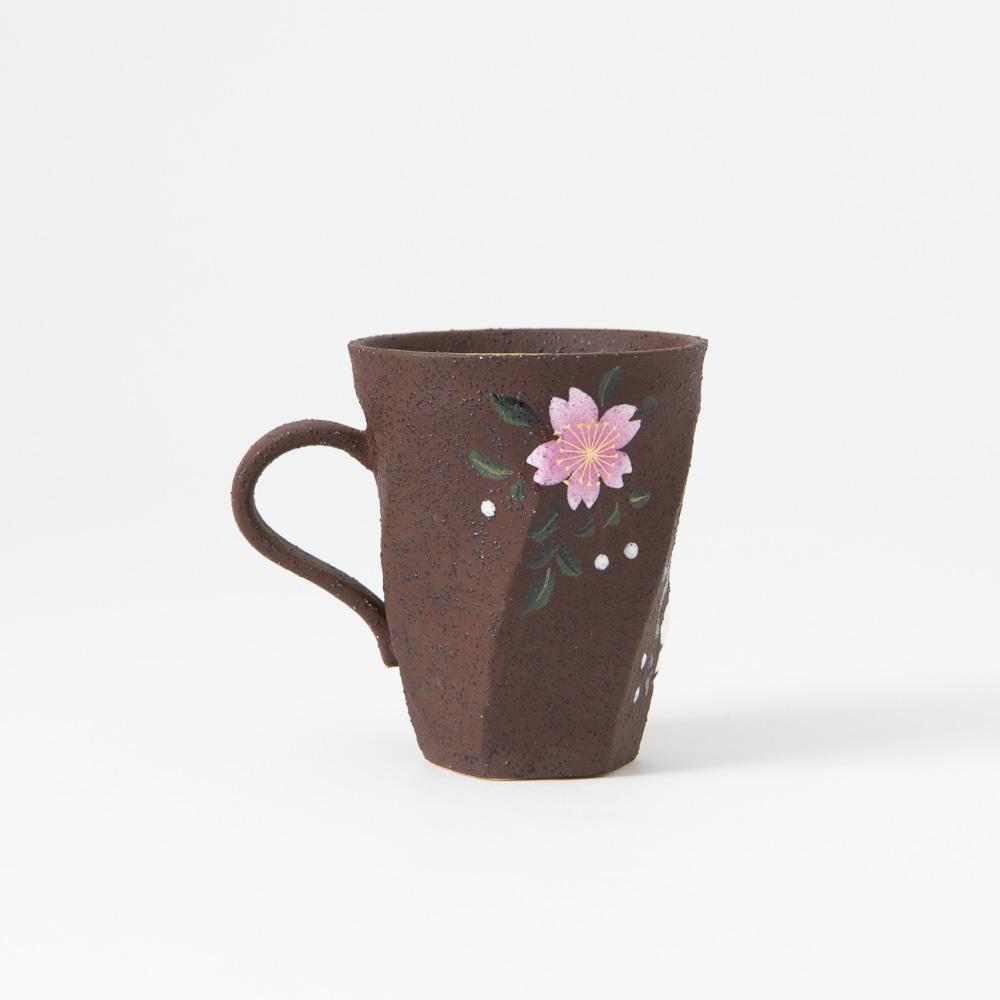
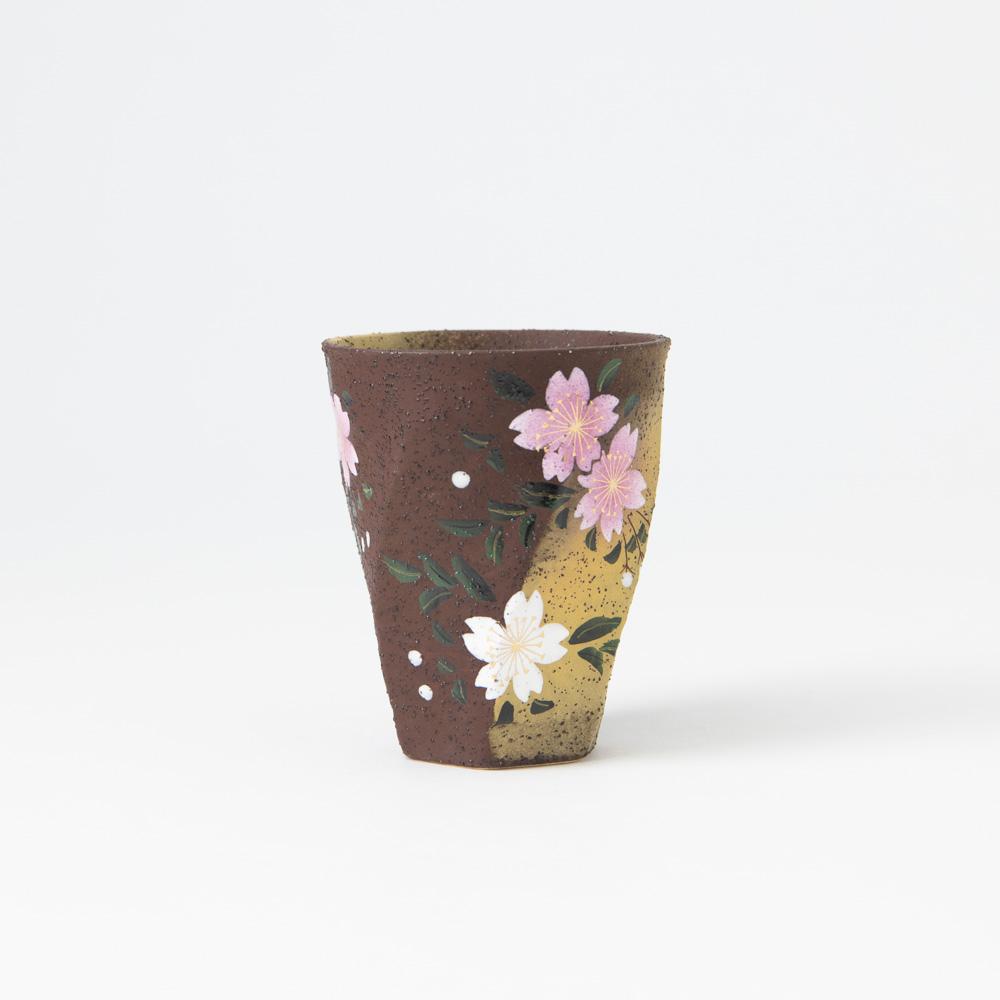
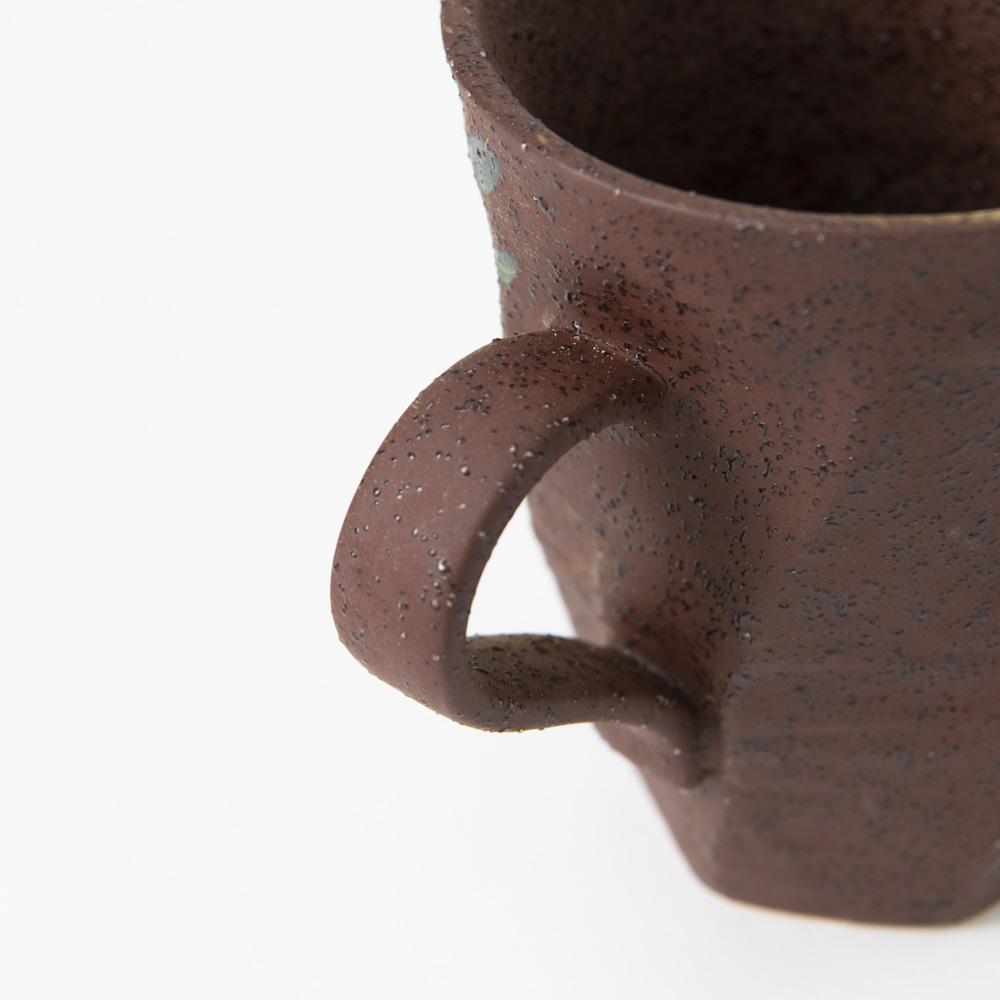
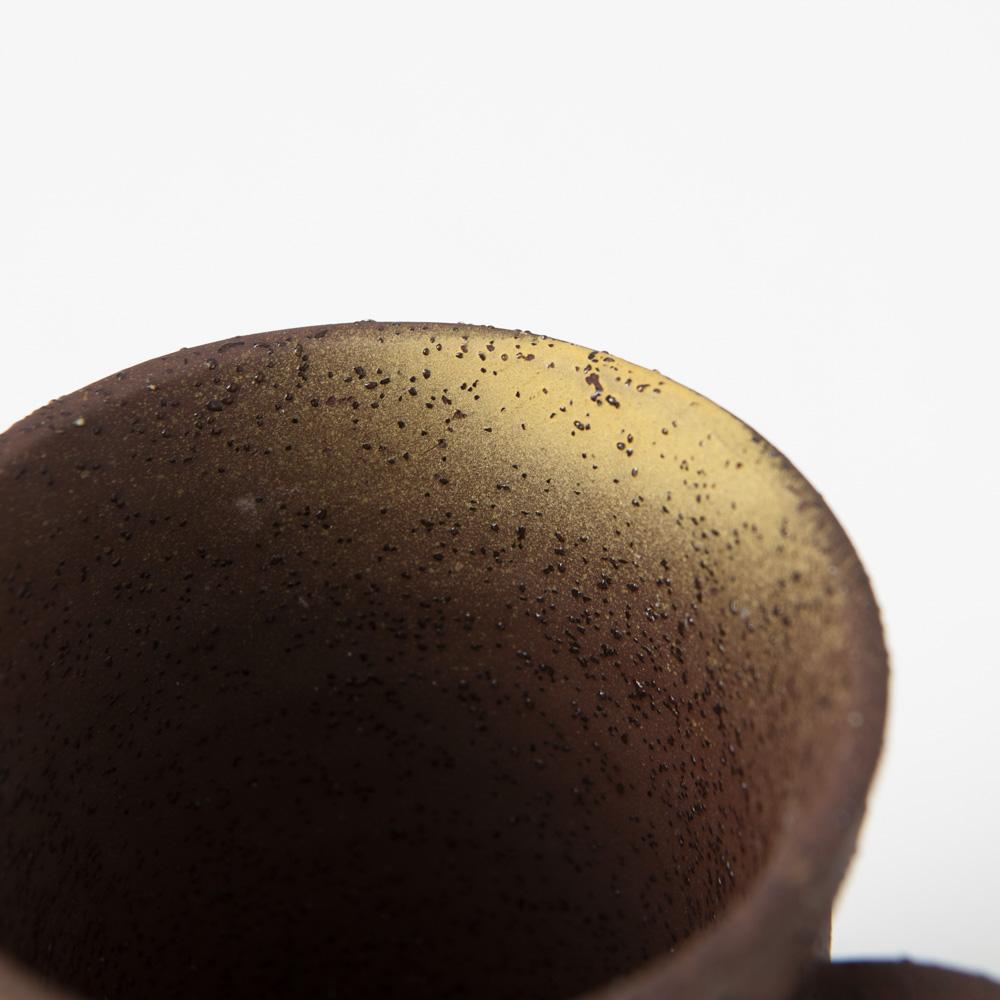
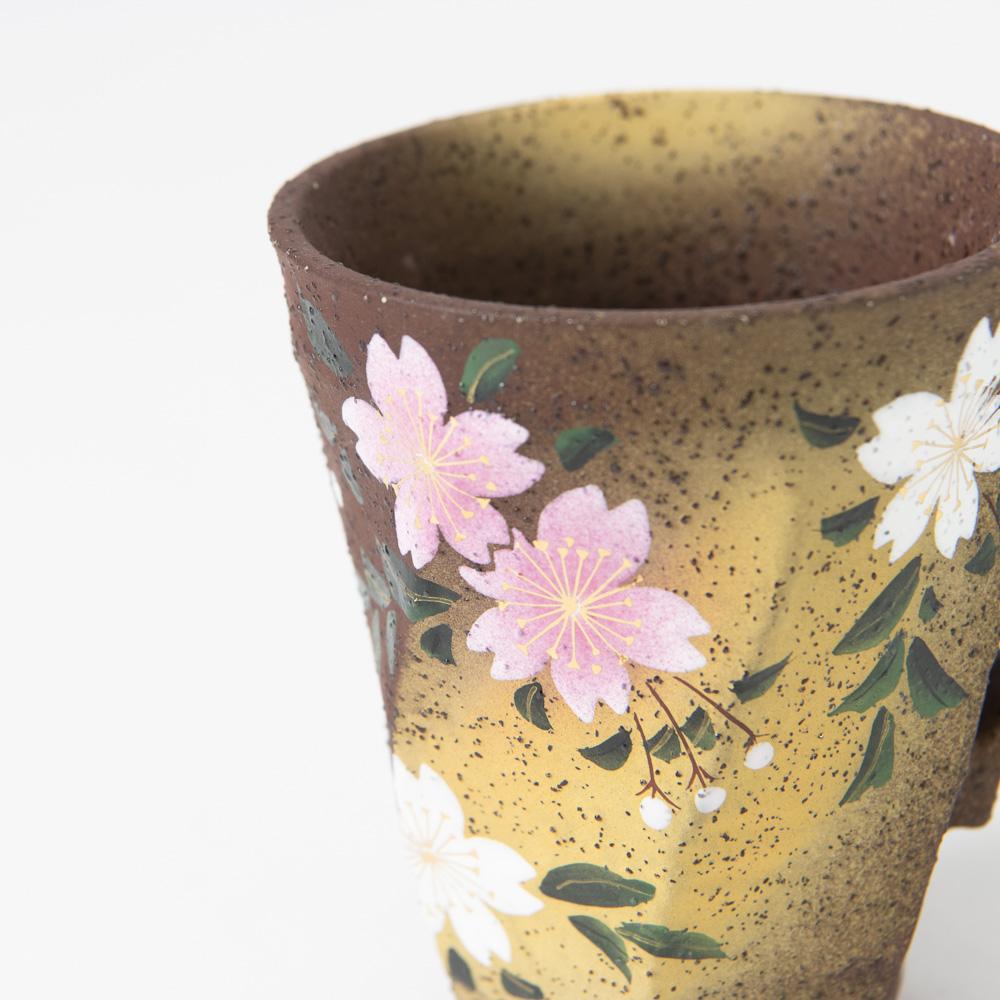


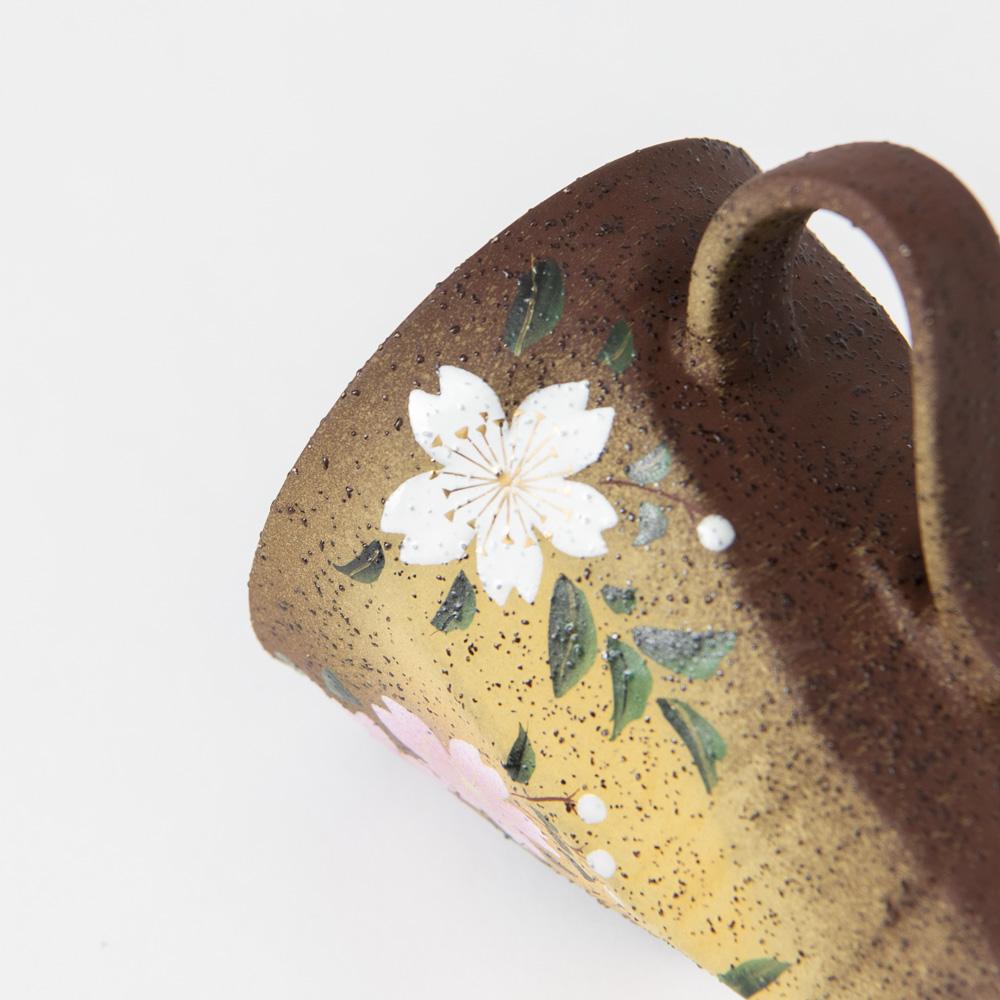
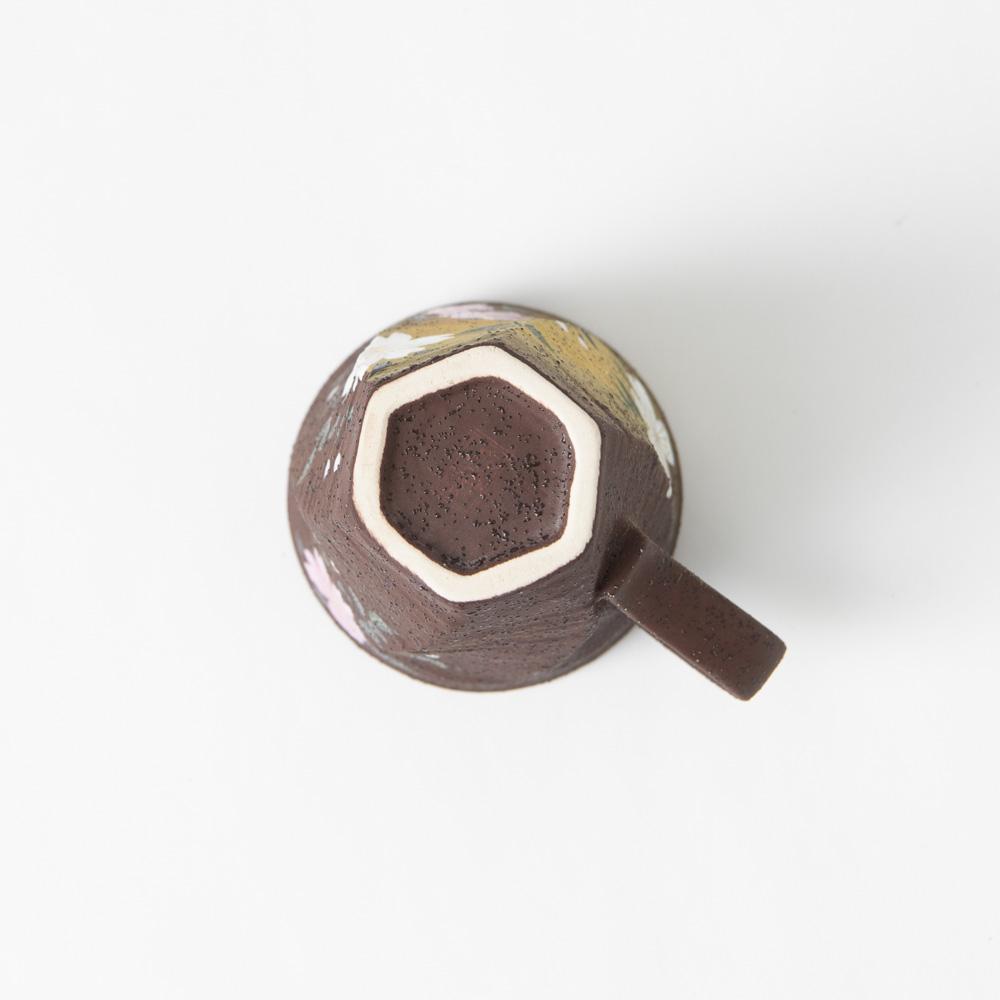

Bizan Kiln Sakura Rough-Hewn Kutani Mug
Estimated Shipping Widget will be displayed here!
The warmth of this Japanese stoneware mug combined with an elegant lovely cherry blossoms(sakura) painting imparts a rare and luxurious quality.
Sakura has symbolic meanings of "spiritual beauty," "elegance," and "excellent education." This Japanese mug can be a perfect gift for your loved one or to yourself.
The raised texture of the mug is comfortable and fits in the hand perfectly. The gradient pattern created by baking at high temperatures is a graceful combination of nature and art.
It compliments any space and lends an air of style and sophistication simply by placing it on a table. It is an exquisite piece suitable for daily use or when entertaining guests.
We also have the same mug with a hydrangea painting, so see more items from our Kutani Mug collection.
PRODUCT DETAIL
- Quantity: 1 cup
- Dimension: D8.3cm(3.26in) x H9.8cm(3.85in)
- Material: Stoneware - Kutani ware
- Origin: Made in Japan
- Brand: Bizan Kiln
![]()
Choose options
















